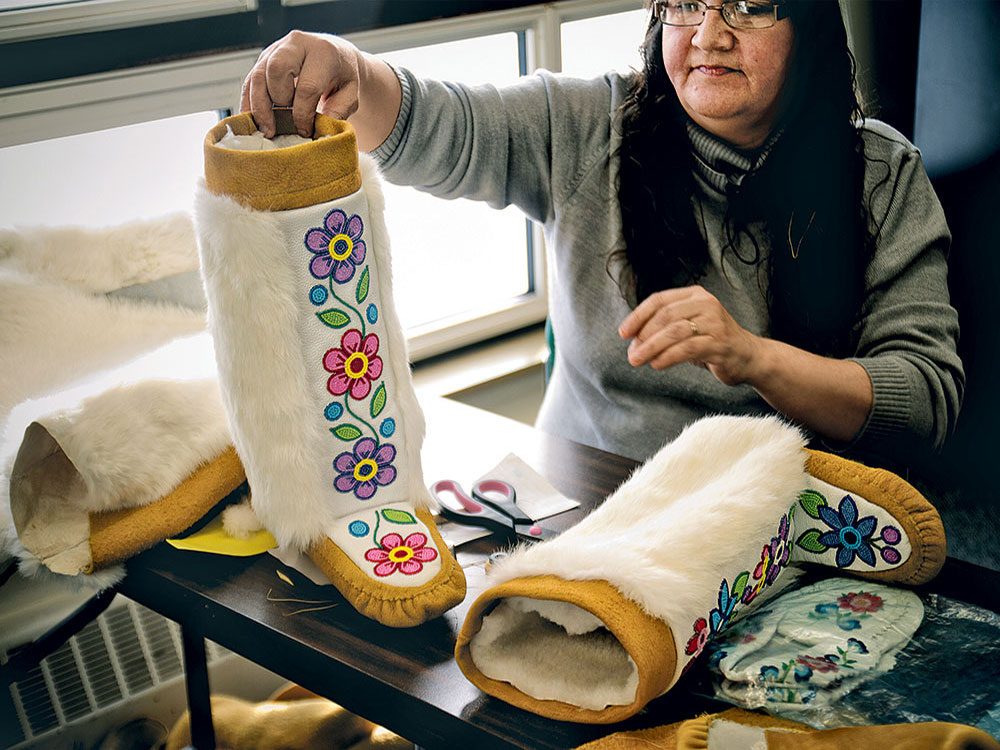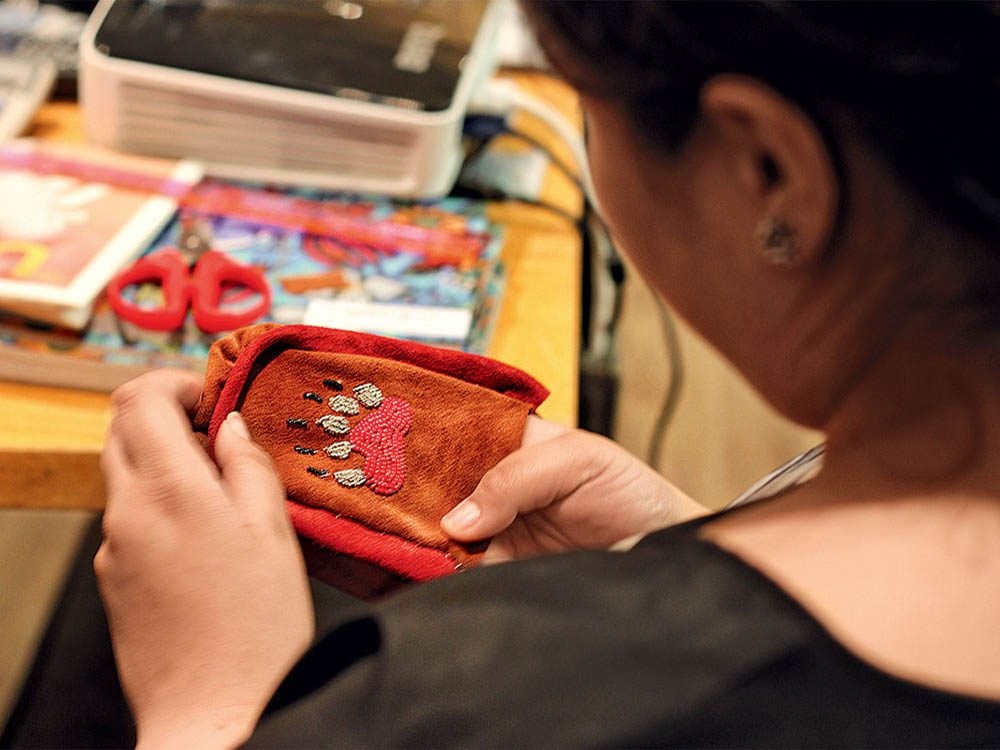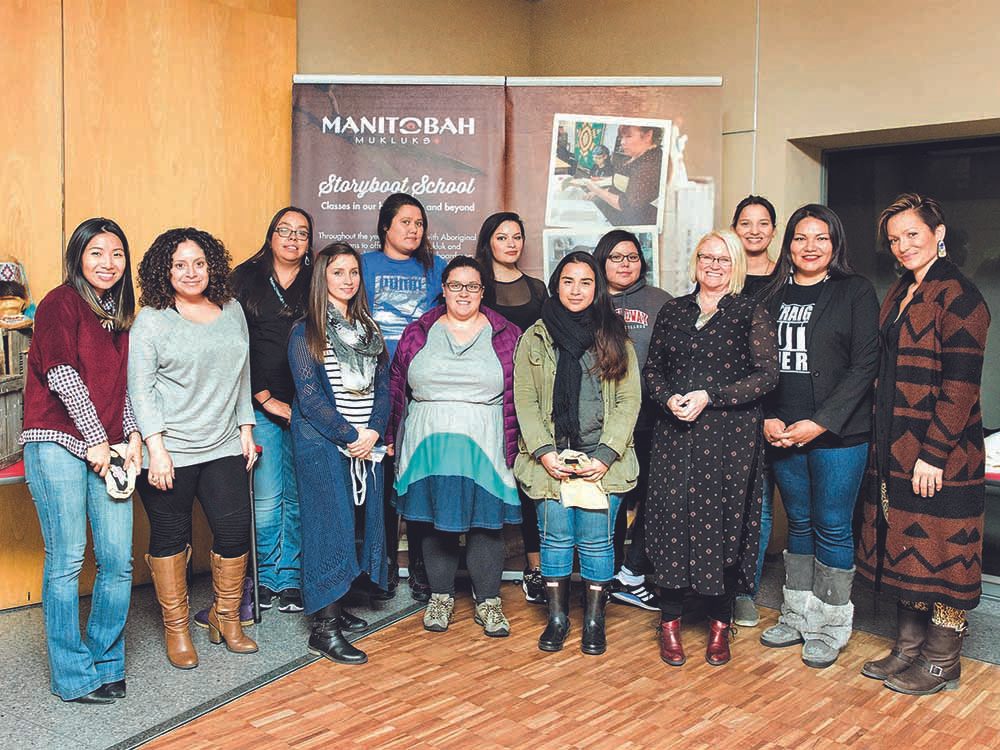
Boot Camp, Indigenous Style
As thousands of Canadians sleep in on their day off, or head to brunch with family and friends, a group of people are coming together every Sunday for the Manitobah Mukluks Storyboot School at the Bata Shoe Museum in Toronto to embark on a project: the wonderful yet complicated task of creating traditional Indigenous mukluks. To many, this may seem like simply an art class full of crafty people, but for this Indigenous woman, it means so much more.
It is 2016, and there has been so much incredible work done around the concept of reconciliation. For many people, Canadian and Indigenous, this word seems like a light of hope at the end of a long, dark tunnel. However, if you sit down and ask someone what reconciliation means to them on a personal and practical level, the answer is often, “I have no idea.” It is a concept that is attractive and fills Canadians with a warm and hopeful glow, but it is often difficult to translation into meaningful action.
As an Indigenous person, I have asked myself this question many times. I don’t claim to be any great political thinker; however, I am well aware that I am a political being. Most Indigenous people are—we have to be. Our country’s history, one of political and cultural interaction, has been tumultuous to say the least. At the core of this broken relationship was lack of respect, understanding and compassion by the mainstream society towards the Indigenous nations. As an Indigenous person, I can only speak to how this relationship affected Indigenous peoples. Our nations have been impacted at every level: socially, culturally and politically. We’ve been devastated by the impact and legacy of governmental policies that sought to eradicate who we were. We are still reeling from this today.

However, there is hope. Today there is a new generation of people who optimistically seek an equal, socially just and stronger Canada. The question remains though: How do we do this on a foundation with such enormous cracks? How can we reconcile? How can one person embrace reconciliation?
In the words of hereditary Chief Dr. Robert Johnson of the Gwawaenuk First Nation, “Reconciliation has to begin as an inside job,” meaning you have to start within you. In your heart and spirit, you have to commit to making change at a personal level.
Every Sunday, there are now 18 youths coming together to do just that. This group of both Indigenous and non-Indigenous people are getting to work on this “inside job.” Whether they know it or not, they are staking a claim on reconciliation through the act of cultural revitalization.
How is mukluk-making considered reconciliation? I grew up seeing groups of people beading and actively carrying on cultural practices. It would often be around a kitchen table, and there would be tea and gossip and lots of laughs. Through this shared action with may family and friends, we would strengthen our cultural and family ties, as well as share our expertise with one another. This is passed down through generations of Indigenous peoples. This is how we survived and nourished.

For seven months, the Bata Shoe Museum with the generous backing of the TreadRight Foundation, which has provided us guidance with their expertise in sustainability (in particular their support of local artisan activities), will host students from all walks of life to sit down around this table. They will begin to share a journey. They will help to claw back some of what was lost. They will help renew a relationship in a positive way. They will join together for six-week courses of mukluk-making, and they will share their personal histories and cultural stories. In the end, 75 more people will know the beautiful art of mukluk-making, and they will pass this knowledge on. They will learn how hard and time-consuming it is, and will have a hands-on understanding of what generations of Indigenous peoples made to keep their families warm in the winter. They will be proud of their hard work and share in this personal accomplishment with their peers.
Most of all, the reconciliation (through mukluk-making) will be done together. It will strengthen the ties between our past, our present and our shared future.
The Manitobah Mukluks Storyboot School is a nonprofit, national Indigenous artisan-run program that seeks to showcase and teach the art of mukluk-making to Aboriginal youth and non-Aboriginal visitors in the hopes of preserving this tradition. In 2017, the Bata Shoe Museum will begin welcoming tour groups from around the world to interact with its students and artisans to help promote global understanding of the craft and First Nations culture. Storyboot School will also offer pop-up workshops across Canada in the coming months.